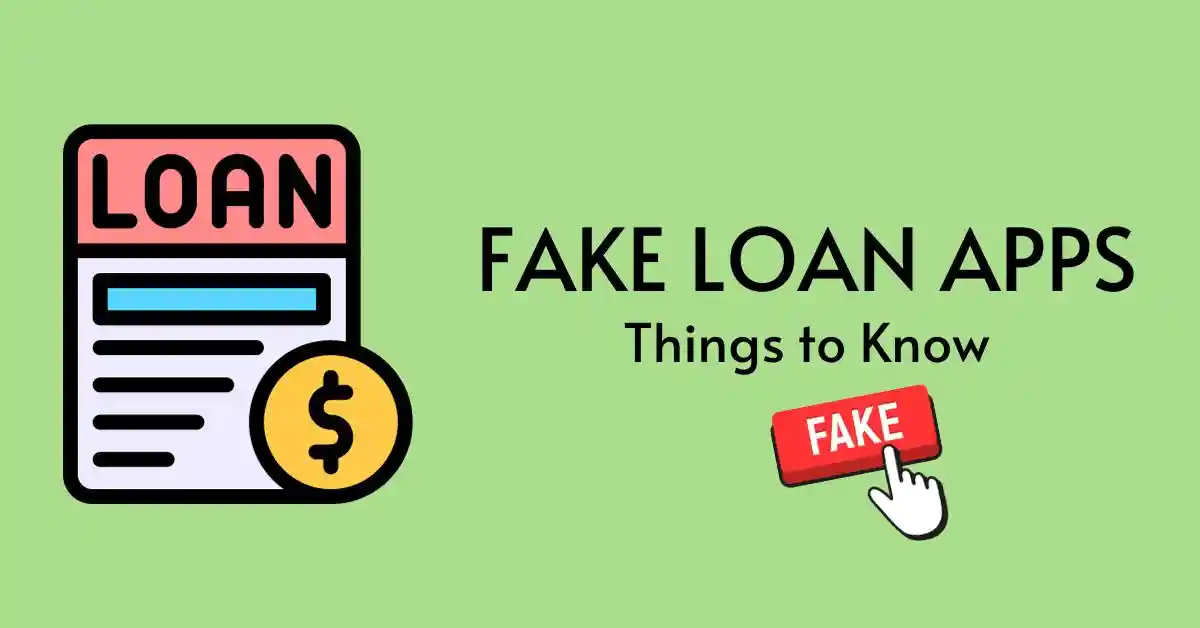The digital revolution has transformed the way we access financial services, making it incredibly convenient to borrow money with just a few taps on our smartphones.
But, this convenience comes with a dark side – the proliferation of fake loan apps that exploit unsuspecting users.
In this article, we will delve into the world of fake loan apps in India and abroad, shedding light on their deceptive practices and how you can shield yourself from falling victim to their scams.
Table of Contents
Understanding Fake Loan Apps:
Fake loan apps are, essentially, wolves in sheep’s clothing. They disguise themselves as legitimate financial services but operate with the intention of defrauding users.
These apps often promise quick digital loans with attractive terms and minimal paperwork, luring users into their trap by providing lower interest rates.
Their business model thrives on the vulnerability of those seeking quick financial solutions for their need without providing any documents(e.g: ITR or Salary Slip), making it crucial to understand their methods to avoid becoming a victim.
Risks and Dangers
The risks associated with fake loan apps are multifaceted. Most alarmingly, they can lead to significant financial loss. By promising seemingly attractive loan terms, they hook users and then impose exorbitant hidden charges.
Some users have reported debts spiraling out of control, often far beyond the originally borrowed amount. However, financial loss is not the only concern.
Fake loan apps can also pose significant risks to your personal data and privacy. Many of these apps request extensive personal and financial information during the application process including Location, Camera, Contacts, and Messages, which can then be misused or sold to third parties without someone’s knowledge.
Indian Government Regulations:
Thankfully, Indian regulatory authorities are not turning a blind eye to this problem. The Reserve Bank of India (RBI), India’s central banking institution, has taken a proactive role in regulating digital lending platforms.
In 2022, the RBI issued a set of guidelines specifically targeting digital lending apps. These guidelines are designed to safeguard the interests of consumers and ensure that digital lenders adhere to transparency, fair practices, and data security.
The regulatory framework is evolving to ensure that fake loan apps face legal consequences for their deceitful practices.
Also Read: Best Apps to Check Credit History for Free
Signs of Fake Loan Apps:
Spotting a fake loan app can be challenging, but several red flags can help you identify them.
One of the most common signs is overly aggressive marketing. Fake loan apps often inundate users with unsolicited messages and calls, promising instant loan approval and disbursement.
If an app sounds too good to be true, it probably is. Lack of transparency is another significant indicator.
Legitimate financial institutions are required to provide clear terms and conditions, including interest rates and repayment schedules.
Fake loan apps often hide critical information, making it difficult for users to understand the true cost of borrowing.
Here are some common characteristics and dangers associated with fake loan apps:
Deceptive Advertising: Fake loan apps often use deceptive advertising to attract users. They may promise quick and easy loans with low interest rates, even to individuals with poor credit histories.
Data Collection: These apps may ask for extensive personal and financial information during the loan application process. This information can be misused for identity theft or sold to other malicious actors.
Hidden Fees: Many fake loan apps hide exorbitant fees and charges in the fine print of their terms and conditions. Borrowers may end up owing much more than they originally expected.
Unauthorized Access: Some fake loan apps may request access to a user’s contacts, messages, or other data on their mobile device. This can lead to privacy breaches and unauthorized sharing of personal information.
No Transparency: Legitimate financial institutions are required to provide clear terms and conditions, including interest rates and repayment schedules. Fake loan apps often lack this transparency, making it difficult for users to understand the true cost of borrowing.
Unsecured Platforms: Fake loan apps may not use proper security measures to protect users’ data, making them vulnerable to hacking and data breaches.
Loan Approval Scams: Fake loan apps may claim to approve loans quickly but then request an upfront fee before disbursing the loan, after which they disappear without providing any funds.
Phantom Lenders: Some fake loan apps create a facade of multiple lenders, but they are all part of the same scam operation.
To avoid falling victim to fake loan apps, it’s essential to do thorough research, check reviews, and verify the legitimacy of any financial service provider. Always be cautious about sharing personal and financial information online, especially through apps that seem too good to be true. Using well-established and reputable financial institutions is the safest way to secure a loan or financial assistance.
How to Protect Yourself from Scams?

Protecting yourself from fake loan apps begins with due diligence. Before you download and use any financial app, take the time to research its legitimacy.
Verify the app’s credentials, including its website, reviews, and licenses. Read the terms and conditions carefully, especially focusing on interest rates and any hidden fees.
Remember, it’s essential to keep your personal and financial information private.
Legitimate lenders will not ask for access to your contacts, messages, or other sensitive data on your mobile device.
If an app is requesting more information than seems necessary for a loan application, it’s a red flag. Always prioritize your cybersecurity and privacy.
Let’s understand this in bullet points for more clarity :
- Thoroughly research any loan app or provider before sharing personal information or accepting a loan offer.
- Ensure the lender is authorized and regulated by relevant authorities.
- Look for user reviews and feedback to gauge the legitimacy of the service.
- Legitimate lenders won’t ask for fees in advance.
- Only provide essential personal and financial information to trusted sources.
- Confirm the lender’s physical address, phone number, and customer support.
- Understand all terms and conditions, including interest rates and fees.
- If you suspect a scam, report it to the authorities or relevant agencies.
- Keep up to date with the latest financial scams and fraud prevention measures.
- If something seems too good to be true, it likely is. Be cautious.
Now, you must be wondering if is there any way to find fake apps. Here’s the complete list of fake loan apps in India, you must check the list and share it with other people in your circle to spread awareness.
#1. Reporting Scams
If you suspect that you have encountered a fake loan app, it’s crucial to report it to the relevant authorities. The Indian government and law enforcement agencies are actively working to crack down on these scams.
Reporting the app’s details, including its name, contact information, and any supporting evidence, can help in their efforts to combat fraudulent lending apps.
It’s a civic responsibility to report such scams to protect others from falling victim to the same trap.
#2. Genuine Alternatives
Fortunately, there are legitimate and reputable financial institutions and apps in India that can meet your lending needs without exposing you to undue risk.
Before choosing a lender, it’s advisable to explore these trusted alternatives. Banks and NBFCs (Non-Banking Financial Companies) regulated by the RBI are reliable sources of credit.
Many established fintech platforms also offer transparent and secure lending services.
For your convenience, we have listed some of the best and most legit personal loan apps in India that you can try in case of emergency fund requirements. We have thoroughly tested and used these apps multiple times.
#3. Case Studies
Let’s take a closer look at some real-world cases where fake loan apps were exposed and the culprits brought to justice.
These case studies will illustrate the severity of the problem and the commitment of Indian authorities to protect consumers from such scams.
#4. User Stories
Hearing from individuals who have been victims of fake loan app scams or narrowly avoided them can provide invaluable insights.
These personal accounts can help you understand the tactics employed by scammers and emphasize the importance of staying vigilant.
Frequently Asked Questions(FAQs):
What are fake loan scams?
Fake loan scams involve deceptive individuals or apps that offer loans with fraudulent intentions, often resulting in financial loss or data theft.
How can I identify a fake loan app?
Look for red flags such as overly aggressive marketing, hidden fees, and a lack of transparency. Genuine lenders have clear terms and conditions.
What should I do if I suspect a fake loan app?
Report it to the relevant authorities and regulatory agencies. Protect others by sharing details of your experience on social media and other forums.
Are all online loan apps scams?
No, many legitimate online loan apps exist. Research thoroughly, check for licensing, and read reviews to distinguish between genuine and fraudulent apps.
Should I pay upfront fees for a loan?
Legitimate lenders do not ask for upfront fees. Avoid any app or service that requires payment before granting a loan.
How can I protect my personal data when applying for loans?
Only provide necessary personal and financial information to trusted, verified lenders(e.g.: Aadhaar number, PAN number, Mobile number & Email ID). Be cautious about sharing sensitive data.
What steps can I take to ensure a loan app is legitimate?
Verify the app’s licensing, read user reviews, and check for clear, transparent terms and conditions. Report any suspicious apps if found.
Can I get my money back if I’ve been scammed by a fake loan app?
It can be challenging, but you should report the scam to the authorities, and they may investigate. However, recovery is not guaranteed.
Final Words:
In a world where convenience and speed are highly valued, it’s essential to remember that not all that glitters is gold.
Fake loan apps have emerged as a significant threat, preying on the financial vulnerabilities of many. By being aware of the risks, understanding the signs of deception, and reporting suspicious apps, you can protect yourself and your loved ones from these scams.
Stay informed, stay safe, and empower yourself to make sound financial decisions.
| Visit Home page: 👉 | Click Here |
| Follow us on Instagram: 👉 | Click Here |
| Subscribe on YouTube: 👉 | Click Here |
| Join our (New)Telegram Channel: 👉 | Click Here |
| Connect with us on Twitter: 👉 | Click Here |
✪ Please Bookmark our website to receive the most useful updates, regularly for free. Press (Ctrl+D) now, to Bookmark instantly. @: gadgetskool.com


